Cardiovascular CFD & FSI Simulations
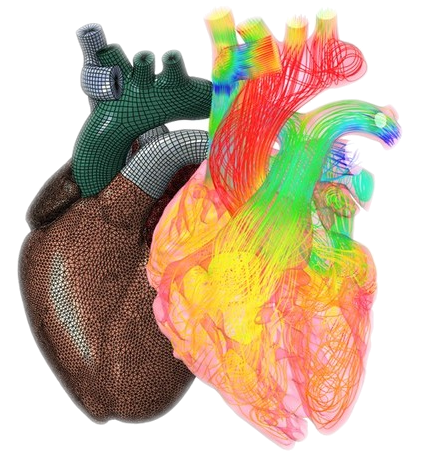
Challenge 1: Complex Geometries
The first requirement for computational fluid dynamics/fluid-structure interaction simulations is defining the flow domain and mesh it. Traditionally, the flow domain is either extracted manually by the user from medical imaging data or represented using an idealised geometry. Once extracted, the flow domain needs to be discretised into a suitable mesh. Given the intricate nature of the cardiac geometries, these steps are often highly time-consuming and present a significant bottleneck in the simulation workflow.
Solution 1: SGGRTM & Automatic Grid Generation
One of the unique features of FlowVision is that the user does not have to define the flow domain manually; instead, it is done automatically by FlowVision through its proprietary Sub-Grid Geometry Resolution (SGGRTM) technology. As soon as the geometry is imported, FlowVision generates a highly quality Cartesian grid around the geometry. This Cartesian grid is then intersected with the underlying geometry to generate the perfect boundary conforming computational grid. SGGR makes it possible to use the real geometry instead of topologically approximated features, thus increasing the numerical accuracy of the simulations. Through automatic extraction of the flow domain, the user does not have to manually extract the flow domain, meaning those valuable hours can be spent refining the physics and post-processing the simulation results.

Challenge 2: Large Deformations of Tissues
As most biological tissues are highly elastic and relatively thin, they can undergo thorough extreme deformations in short time periods. An example to this could be the behavior of heart valve leaflets. If the user is interested in simulating such physiologic scenarios in their fluid-structure interaction (FSI) simulations, traditionally speaking, they can either opt for the Arbitrary Lagrangian-Eulerian (ALE) or the Immersed Boundary (IB) approach.
One of the most encountered numerical difficulty with the ALE method is the extreme deformation of the fluid mesh, which can be fatal. As the fluid mesh is static in the IB method, the user does not have to worry about the extreme deformation of the fluid mesh. However, as this is a non-boundary conforming method, the user cannot quantify the wall shear stress on the deformable bodies.
Solution 2: Moving bodies technology
Thanks to the underlying sub-grid geometry resolution (SGGR) method, FlowVision offers a unique, robust and reliable FSI solution. As with the IB method, the underlying computational grid in FlowVision is static; however, unlike the IB method, this computational grid is generated by physically intersecting the initial Cartesian grid by the solid boundaries (SGGR method), thus providing the user with a perfect boundary conforming computational grid.
Because FlowVision works with a perfect boundary confirming grid, the wall shear stress on the surfaces of the deformable bodies can also be evaluated efficiently and accurately, just as in the ALE approach. If the sequence of various deformed configurations of the biological tissue over a cardiac cycle is available to the user, in that case, FlowVision can easily import those deformed configurations at the desired time points in the cardiac cycle and can smoothly interpolate the geometries between two consecutive time points.

Challenge 3: Contact & Closure
Different biological tissues can contact one another during a cardiac cycle; for example, three leaflets of the aortic valve come in complete contact during diastole. This complete contact between biological tissues presents a numerical challenge for traditional fluid-structure interaction (FSI) algorithms. When the solid tissue comes in complete contact with the neighbouring tissues, the fluid mesh between these tissues must “disappear”, which is not numerically. As such, users either have to leave a non-physiologic gap between the tissues or use artificial numerical tricks, such as proximity defined porosity as a workaround.
Solution 3: 'No-trick' Contact & Closure Modeling
Unlike its 'competitors', FlowVision can model the complete contact between biological tissues without having to use any numerical tricks or additional models. In essence, this challenge is not unique for cardiac modeling: Good examples from other industries are valves in internal combustion engines, industrial sealings etc. This means, an existing technology is naturally addressing the need in cardiac simulations, no numerical tricks!
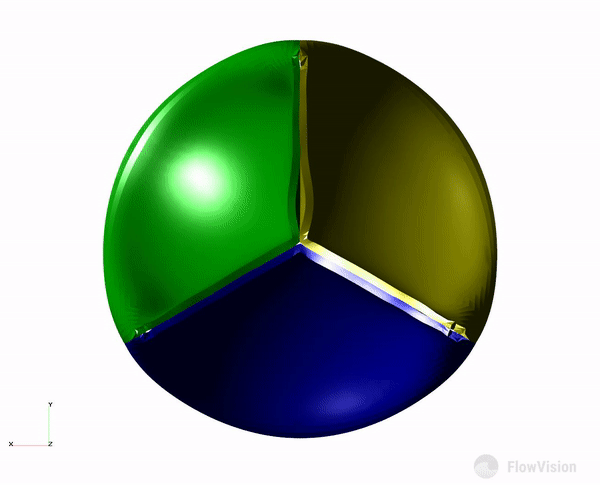
Challenge 4: Physiological Relevancy of Boundary Conditions
The physiologic relevance of the cardiac simulations depends on using the correct boundary conditions. Traditional boundary conditions available as standard in most general-purpose computational fluid dynamics (CFD) packages are often inadequate for cardiac simulations. Users have to design their own boundary conditions in the form of lumped parameter networks, such as the three-element Windkessel model, and couple them to the inlet/outlet of their flow domain. Users must write their user-defined functions or user-subroutines in a programming language compatible with the CFD package they are using to design such boundary conditions. Writing such UDFs and user-subroutines not only requires expert knowledge of the computing language but is also time-consuming and tedious.
Solution 4: Ability to use Windkessel and similar LPN models
FlowVision offers a sophisticated and thorough in-built Formula Editor that can be used effectively and efficiently to code lumped parameter networks interactively within FlowVision without writing an external user defined function or user-subroutine. This feature is quite lucrative as it enables the users to streamline the entire process of customizing the boundary conditions for cardiac simulations.

What is unique in FlowVision & ABAQUS FSI?
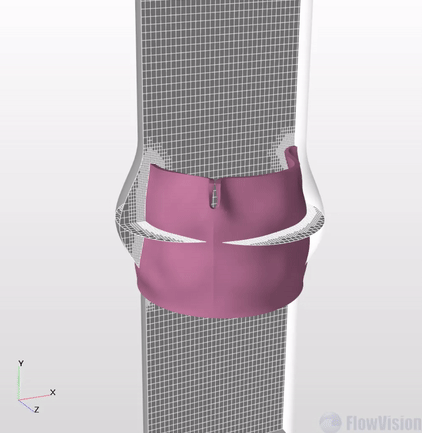
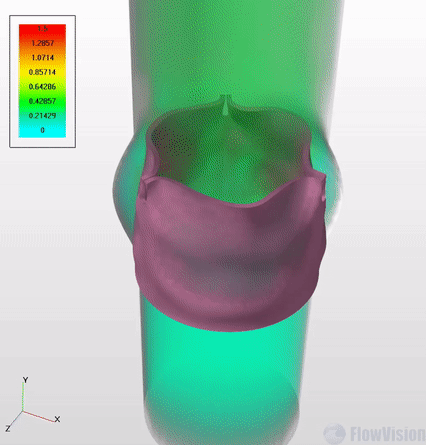
Medical Imaging Based CFD/FSI Simulations

Living Heart Project
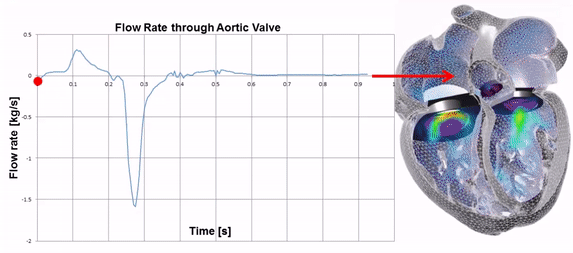
The Living Heart Project (LHP) aims at developing and validating highly accurate patient-specific digital human heart models. Led by Dassault Systèmes and conducted by a large group of highly qualified cardiovascular researchers, educators, medical device developers, regulatory agencies, and practicing cardiologists; this project focuses on developing models which serve as a technology base for medical device design, clinical diagnosis, education, training. Project Web Page
Capvidia is the CFD simulation partner of the Living Heart Project aiming to integrate FlowVision and Abaqus for a realistic simulation of blood flow in a beating human heart taking into consideration the fluid-structure interaction between blood, heart tissues and artificial mechanical valves.
